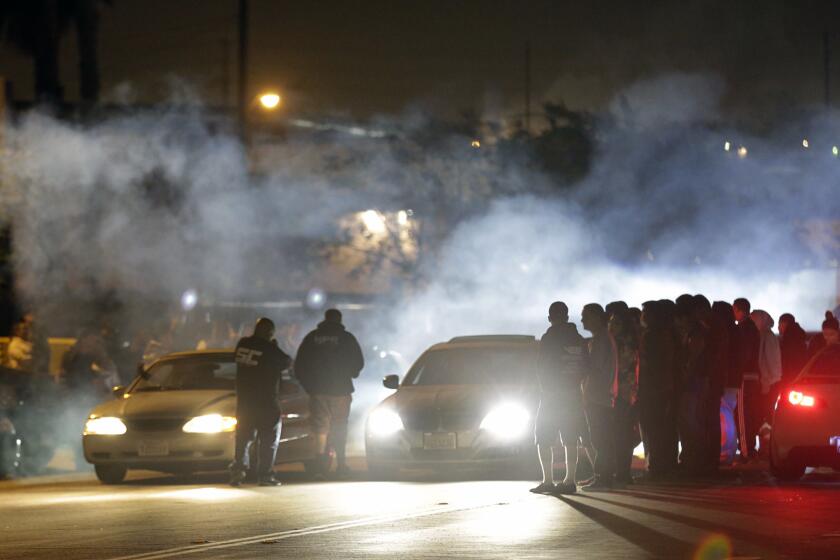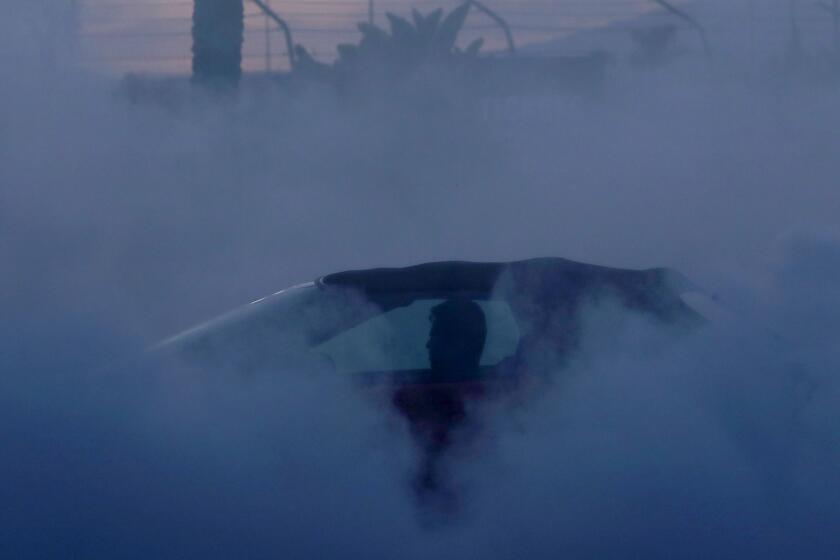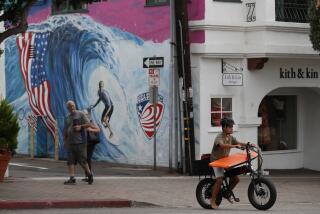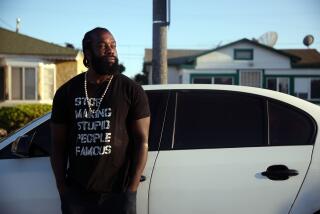Street racing surged during the pandemic. L.A. now wants to crack down
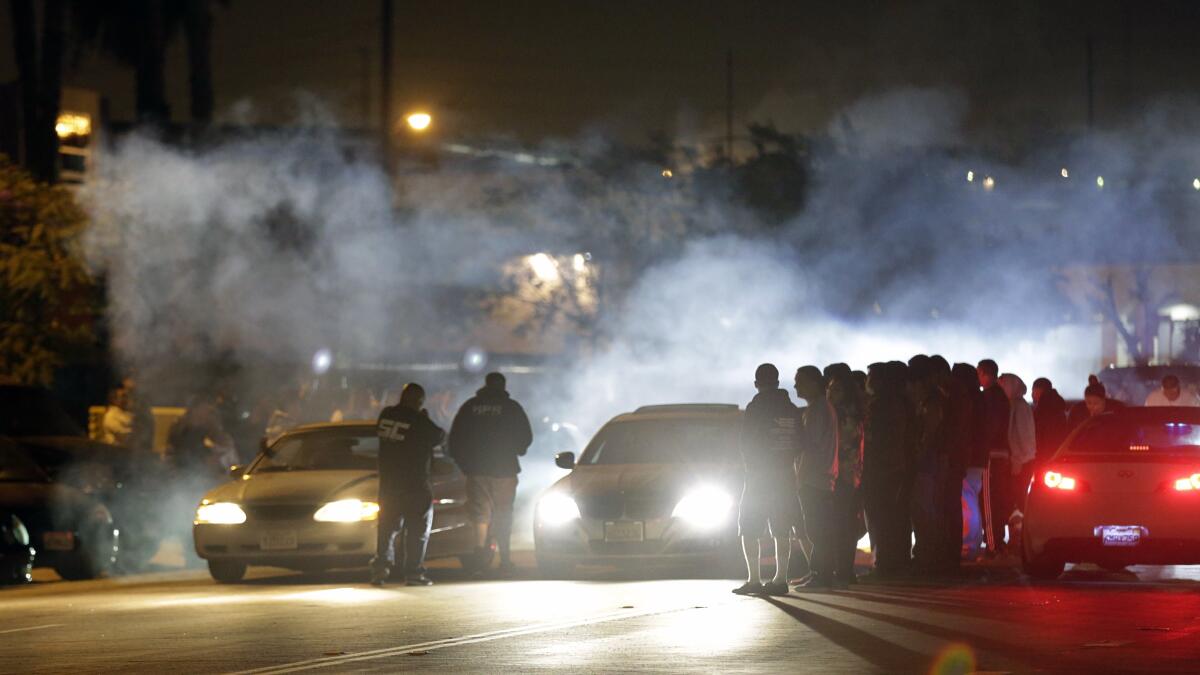
Underground street racing has long been an illicit part of Los Angelesâ car culture, with boulevards transformed into wide-open stretches of tarmac, ready made for smooth tires, supercharged engine blocks and tuners.
Officials noticed an uptick during the first months of the pandemic, when stay-at-home orders made L.A.âs empty streets even more inviting for large gatherings known as sideshows or takeovers.
Fueled by social media, illegal street racing activity â and its attendant dangers â continued to grow even as pandemic restrictions eased and L.A. commuting patterns returned.
Los Angeles officials are now considering new measures to crack down on street racing, joining a growing number of cities taking the fight from the streets to social media and targeting those who organize and promote the races.
California shutdown: Street racers are taking over road emptied by coronavirus, with fatal results
As of July, the number of races and street takeovers across Los Angeles had jumped 27% in 2021, according to the Los Angeles Police Department. LAPD investigators say at least three deaths can be attributed to the inherently dangerous gatherings.
As activity continues to surge, cities across the state and nation have scrambled for new tools to curtail illegal racing and sideshows.
In the San Francisco Bay Area, where street racing activity has also exploded, the San Jose City Council passed an ordinance in late June that makes it a misdemeanor to promote, instigate or encourage such events online. The measure is believed to be the first of its kind in the nation. Perpetrators face fines of up to $1,000, six months in jail or some combination of both if convicted.
Two L.A. leaders, Councilman John Lee and Councilwoman Monica Rodriguez, hope to replicate the measure in Los Angeles. The city took initial steps in that direction Tuesday, when they approved further research on the matter.
The motion approved Tuesday will direct the city attorney to report on the feasibility of enacting an ordinance modeled after San Joseâs that would âmake it unlawful to knowingly encourage, promote, instigate, assist, facilitate, aid, or abet the gathering of persons as spectators at a street race or reckless driving exhibition.â If enacted, such an ordinance would allow the city to prosecute people advertising underground races on social media.
âAn ordinance similar to the one enacted in the city of San Jose will be a deterrent to those who attend street racing and street takeover events as spectators. Without spectators, the events lose their appeal,â Rodriguez said. âIt is another tool the city can use to protect Angelenos from the increasingly dangerous nature of illegal street racing occurring throughout our city.â
After the city attorneyâs report is completed, the council will reconsider the matter and decide whether to move forward.
Instagram accounts, YouTube channels and other forms of social media have acted as a kind of modern-day bullhorn for Los Angelesâ street-racing community in recent years, according to law enforcement officials and members of the racing community. A big following on social media means a race organizer can draw large crowds to an illegal sideshow or underground race. Instagram Stories, which disappear after 24 hours, has become the marketing tool of choice for many.
The platforms have made celebrities out of cars and drivers and expanded Los Angelesâ reputation as a proving ground for car clubs. Sideshows have become more dangerous because followers and likes are as important now as crossing the finish line first.
Two at a time, the vehicles blasted down a Compton roadway scarred by skid marks from past races.
Cities and states are also stepping up punishments for illegal street racing amid a nationwide uptick in illegal racing and many resulting deaths. This month, Gov. Gavin Newsom signed a bill into law that will allow courts to temporarily suspend the driverâs licenses of people convicted of engaging in or abetting street racing on a highway. That law goes into effect in 2025.
In Georgia, Gov. Brian Kemp signed into law a bill that mandates a minimum of 10 days of jail for drag-racing convictions, and New York lawmakers are considering measures to use speed cameras at night and on weekends in hot spots to capture street racers.
Tuesdayâs vote was the second street racing-related motion the L.A. City Council has considered in recent months.
In September, the council voted to direct the Department of Transportation and the Bureau of Street Services to report back in coordination with the LAPD Street Racing Task Force on a menu of traffic-calming measures, such as speed humps or rumble strips, that can be used where illegal racing frequently occurs. That process is underway, and the reports are forthcoming.
LAPD Cmdr. Al Pasos, who oversees all of the traffic bureaus, said the city and department are examining a number of measures to reduce the dangers that come with street racing.
He said âintervention devices,â such as temporary speed bumps and pop traffic circles, in areas favored by racers can play a role in thwarting the ability of drivers to speed. Pasos said he is aware the city is considering whether to adopt an approach similar to San Jose.
âIt is going to be difficult to prove,â he said. Pasos said an important question is whether an offense would be handled by the traffic court like a ticket or by the city attorneyâs office.
UCLA law professor Eugene Volokh said the constitutionality of a law criminalizing the online promotion of illegal racing events would hinge on the specificity of the speech in question.
If someone were to put up an Instagram post saying, for example, that illegal street racing is great and everyone should break the law and do it, that would be constitutionally protected speech, he said. But if the post was instead advertising a specific event and urging people to attend, it would be constitutionally permissible for that speech to be punishable by the government, Volokh said.
âIf they draft it narrowly enough and if theyâre not too insistent on trying to restrict as much as possible, then in that case I see the potential for it being perfectly constitutional,â Volokh said.
A Times investigation found 179 people had died in speed contests in Los Angeles County from 2000 to 2017, and investigators have said street races have become an increasing concern in recent years.
The head-to-head drag races most commonly associated with street racing in pop culture have been occurring more frequently in the Valley, according to investigators. They say the random nature of those contests is especially dangerous to pedestrians. Some hot spots are synonymous with racing, such as stretches of Foothill Boulevard off the 210 Freeway in Lake View Terrace.
LAPD Capt. Andrew Neiman, who oversees the Valley Traffic Division, said officers have to define the risk when tracking or moving in to arrest street racers. âWe were following one group, and they got on the freeway and immediately started going 100 mph. At that point we have to assess the risk of tailing them. Even with a helicopter itâs hard,â he said.
Police often struggle to capture drivers and spectators at large takeover scenes because a handful of police cruisers is no match for the crowd of drivers leaving a 300-person sideshow.
Street racers are also getting more savvy, veterans of the Street Racing Task Force say. Although the taking of a driverâs car for 30 days was once the ultimate sanction â departments often post videos or photos on social media of supercars and import pocket rockets getting towed away â some have figured ways around that.
They register the vehicle to a buddy, who then claims to have not authorized such behavior when they lent their car to their friend and so they get it back.
In August, three people in a Volkswagen were killed when they turned left into the path of two racing cars near Andover Drive and Glenoaks Boulevard in Burbank. Jaiden Kishon Johnson, 20, of Burbank; Natalee Asal Moghaddam, 19, of Calabasas; and Cerain Baker, 21, died in the Aug. 3 crash.
The driver of a gray Kia involved in the crash has been charged with three counts of murder and one count of reckless driving, police said. Hamlet Arseni Aghajanyan, 19 of Burbank has pleaded not guilty. The driver of a Mercedes-Benz, a 17-year-old, was also taken into custody and is being held at a juvenile detention facility.
Times staff writer James Queally contributed to this report.
More to Read
Sign up for Essential California
The most important California stories and recommendations in your inbox every morning.
You may occasionally receive promotional content from the Los Angeles Times.
